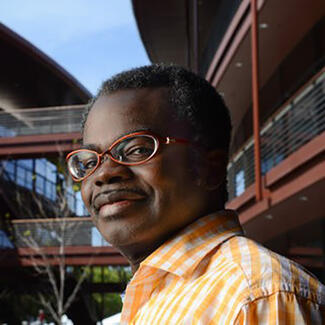
Kwabena Boahen describes Neuromorphic Computing in 'The Future of Everything' podcast
Listen to Kwabena and a fellow bioengineer in "How to build a super-efficient super-computer”.
Professor Kwabena Boahen builds highly efficient "neuromorphic" supercomputers modeled on the human brain.
He hopes they will drive the artificial intelligence future. He uses an analogy when describing the goal of his work: "It's LA versus Manhattan."
Kwabena means structurally. Today's chips are two dimensional — flat and spread out, like LA. Tomorrow's chips will be stacked, like the floors of the skyscrapers on a New York block. In this analogy, the humans are the electrons shuffling data back and forth. The shorter distances they have to travel to work, and the more they can accomplish before traveling home, will drive profound leaps in energy efficiency. The consequences could not be greater. Kwabena says that the lean chips he imagines could prove tens-of-thousands times less expensive to operate than today's power hogs.
To learn how it works, listen in as Kwabena Boahen describes neuromorphic computing to fellow bioengineer Russ Altman in a recent episode of Stanford Engineering's The Future of Everything podcast.
Excerpted from Stanford Engineering's Research & Ideas